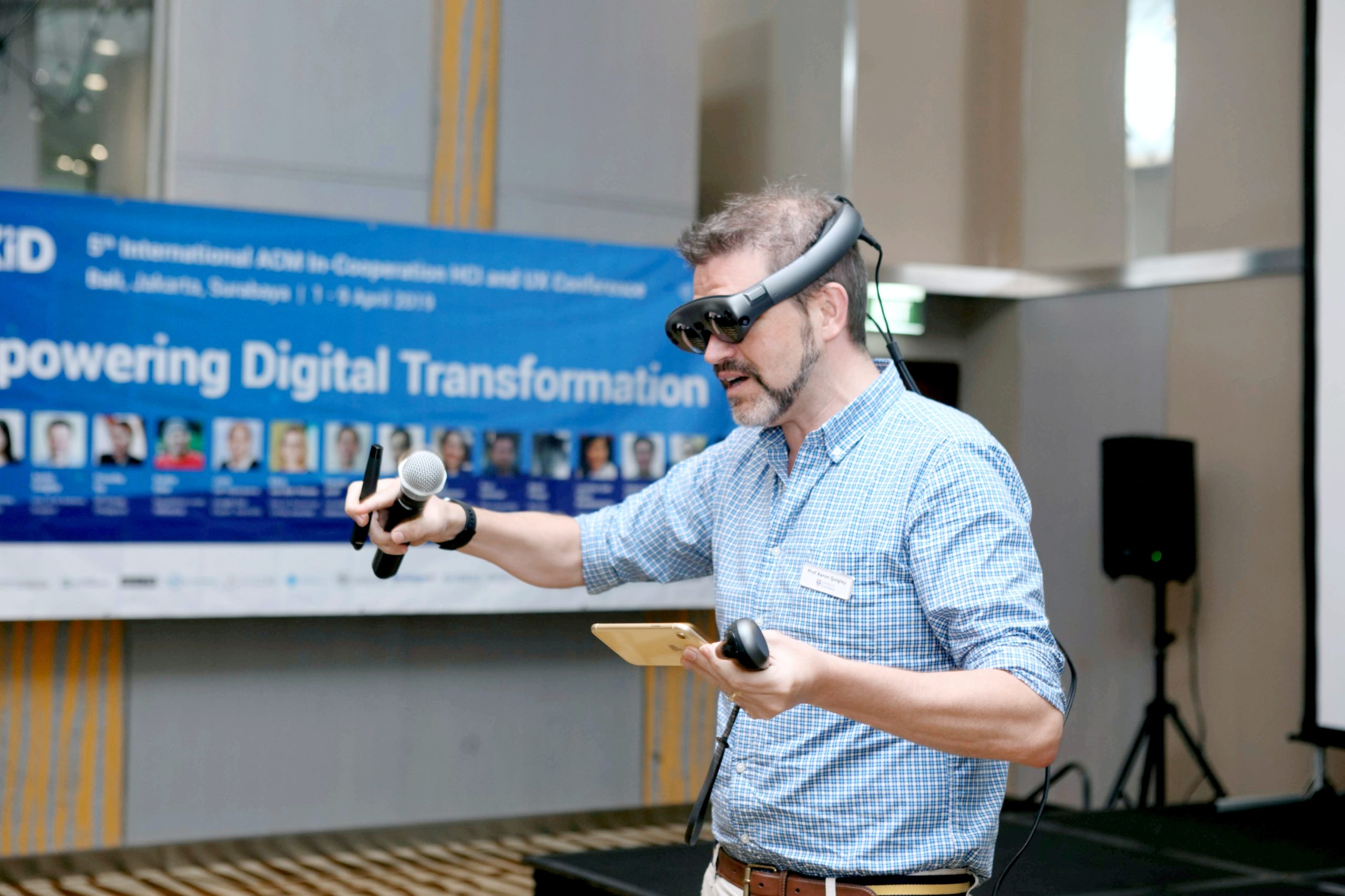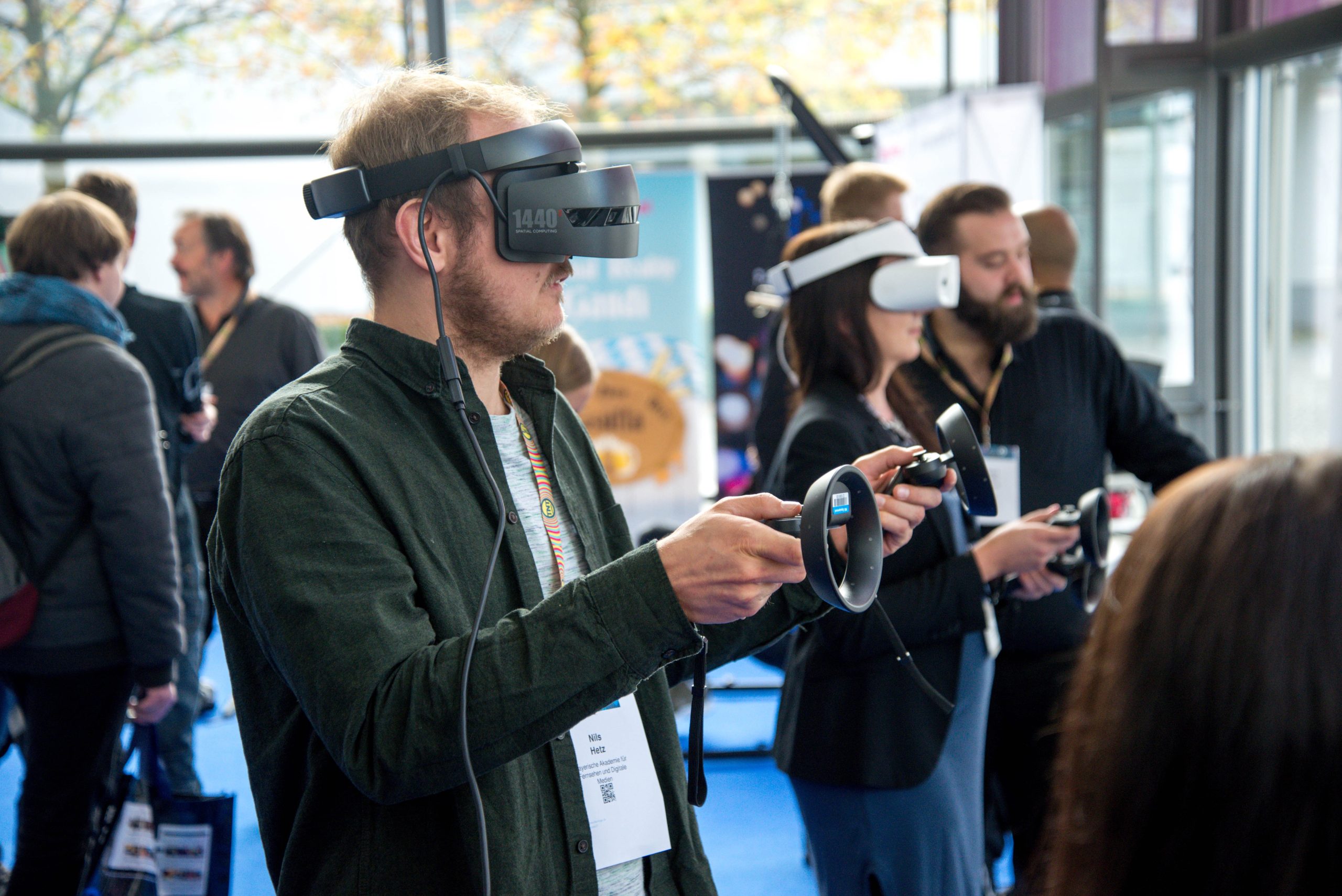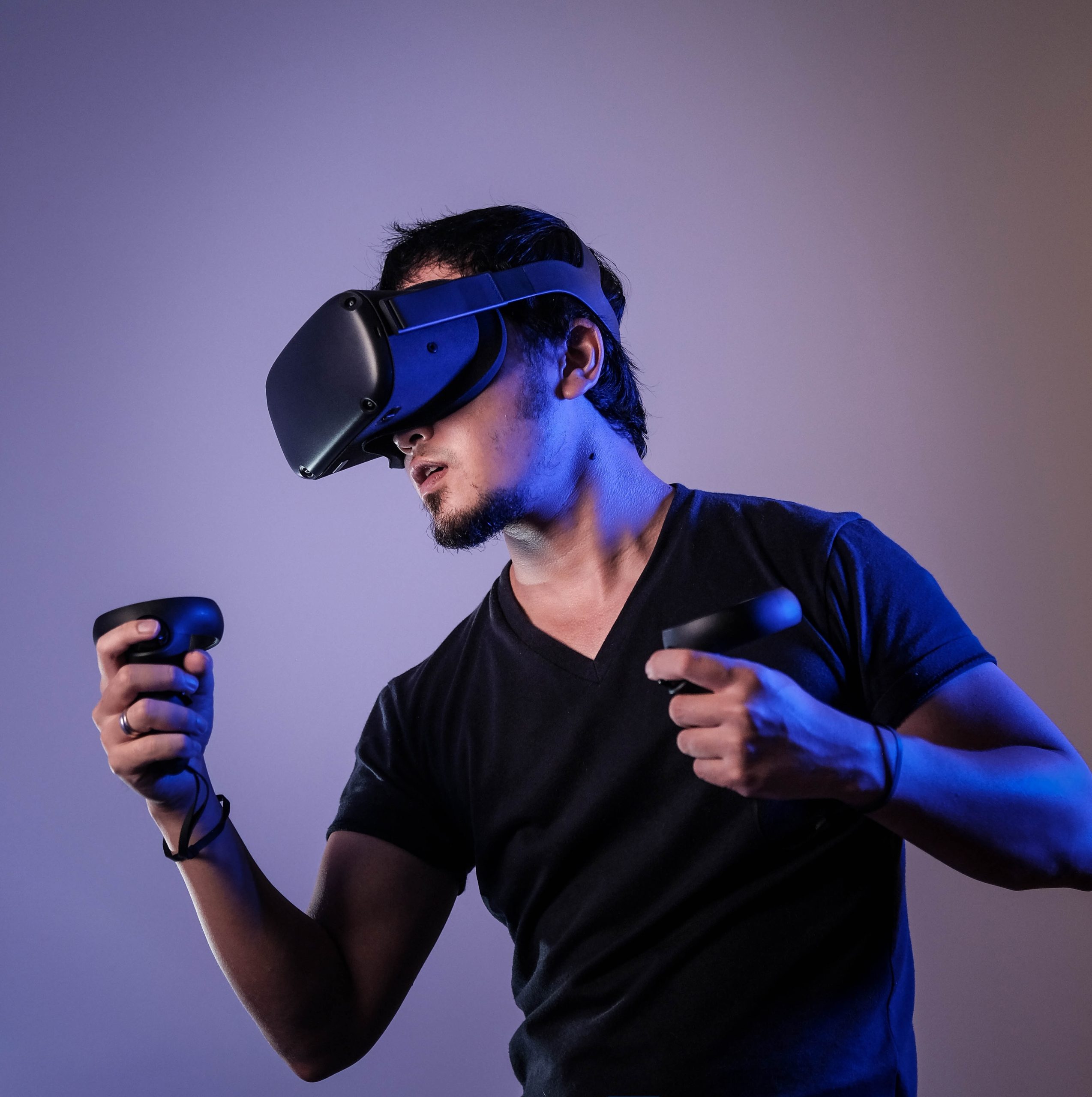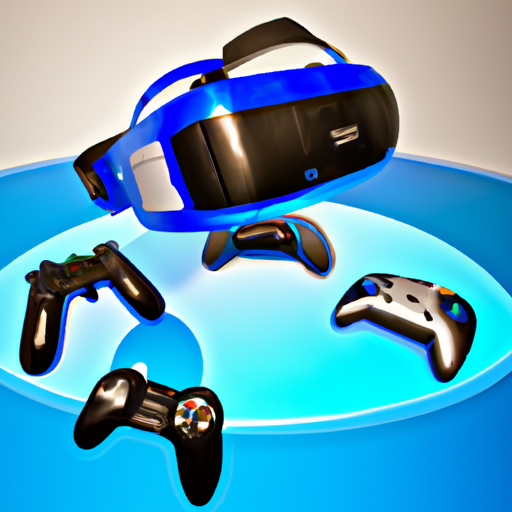Imagine a world where your gaming experience isn’t just confined to your screen. Picture yourself fully immersed in the game, with virtual elements seamlessly integrated into your physical environment. This is the exciting future that mixed reality is bringing to the world of gaming. By blending the digital and physical worlds, mixed reality is revolutionizing the way we interact and engage with games, creating new and immersive experiences that go beyond what we thought was possible. In this article, we will explore the incredible potential of mixed reality in gaming and how it is shaping the future of this dynamic industry.
Understanding Mixed Reality
Definition of mixed reality
Mixed reality refers to the merging of the physical and digital worlds, creating an interactive and immersive experience for users. It combines elements of both virtual reality (VR) and augmented reality (AR) to provide a seamless integration of digital content into real-world environments.
Difference between virtual reality and augmented reality
Virtual reality involves the complete immersion of the user into a virtual environment, where they are isolated from the real world. This is achieved through the use of head-mounted displays (HMDs) and motion tracking technology, allowing users to interact with the virtual surroundings.
On the other hand, augmented reality overlays digital content onto the real world, enhancing the user’s perception and interaction with their physical environment. This is typically done through the use of smartphones, tablets, or smart glasses, enabling users to see and interact with both real and virtual objects simultaneously.
How mixed reality combines the two
Mixed reality takes the best elements of both virtual reality and augmented reality, seamlessly blending them together to create a more immersive and interactive experience. By using spatial mapping technology and content creation tools, mixed reality allows virtual objects to be placed and interacted with in the real world.
Unlike virtual reality, mixed reality keeps users aware of their physical environment, preventing isolation and allowing for real-world interactions. It also enhances augmented reality by enabling virtual objects to accurately interact with the physical world, leading to more realistic and immersive experiences.
Applications of Mixed Reality in Gaming
Enhanced gaming experiences
Mixed reality brings a new level of immersion to gaming, allowing players to feel as if they are truly part of the game world. By augmenting the real world with virtual objects and environments, players can experience games in a more interactive and engaging way. For example, in a mixed reality racing game, players can have their physical surroundings transformed into a realistic race track, while being able to physically steer a virtual car.
Immersive storytelling
Mixed reality offers game developers a powerful tool for storytelling, by blurring the boundaries between the game world and reality. With mixed reality, players can become active participants in the story, exploring virtual environments and interacting with virtual characters in their physical surroundings. This creates a more immersive and memorable storytelling experience.
Real-world integration
One of the unique aspects of mixed reality gaming is its ability to incorporate real-world elements into gameplay. This can range from using a player’s furniture as obstacles in a virtual puzzle game to integrating real-time weather conditions into a virtual world. By leveraging the physical surroundings, mixed reality games can provide a deeper level of immersion and personalization.
Physical interaction in virtual environments
In traditional gaming, players interact with virtual worlds through controllers or keyboards. However, mixed reality takes interaction to a new level by allowing physical movements and gestures to be translated into the virtual world. This means players can physically reach out and grab virtual objects or use their bodies as controllers, enhancing the sense of presence and realism in the game.

Hardware and Software for Mixed Reality Gaming
Head-mounted displays (HMDs)
HMDs are a crucial component of mixed reality gaming, as they provide the visual and audio feedback necessary to immerse players in the virtual environment. These devices typically consist of a pair of goggles or glasses that the player wears, which display the virtual world and provide 3D audio. HMDs often come equipped with tracking sensors to accurately detect the player’s head movements and adjust the visuals accordingly.
Motion controllers
Motion controllers allow players to interact with the virtual world by tracking their hand movements and gestures. These controllers can range from handheld devices to gloves equipped with sensors, which accurately capture and replicate the player’s hand movements in real-time. This enables players to manipulate and interact with virtual objects as if they were using their own hands.
Tracking systems
To accurately map the player’s movements and interactions in the real world, tracking systems are essential in mixed reality gaming. These systems use a combination of sensors, cameras, and markers to precisely track the player’s position and movements. This ensures that the virtual objects and environments align correctly with the physical surroundings, creating a seamless mixed reality experience.
Spatial mapping technology
Spatial mapping technology allows mixed reality games to understand and interact with the player’s physical environment. Using depth-sensing cameras or LiDAR sensors, this technology maps the player’s surroundings, capturing detailed information about the layout and objects in the real world. This enables virtual objects to interact with the physical environment, such as bouncing off walls or resting on real furniture.
Content creation tools
Creating compelling mixed reality gaming experiences requires powerful content creation tools. These tools allow developers to design and build virtual worlds, characters, and objects that seamlessly integrate with the player’s physical surroundings. They enable the creation of interactive gameplay mechanics, realistic physics simulations, and lifelike character animations, ensuring a high-quality mixed reality gaming experience.
Advancements in Mixed Reality Gaming
Improved graphics and visuals
As technology continues to advance, so do the graphics and visuals in mixed reality gaming. High-resolution displays and advanced rendering techniques allow for more realistic and detailed virtual environments. With improved graphics, players can enjoy breathtaking landscapes, lifelike characters, and stunning visual effects, further enhancing the immersive experience.
Enhanced haptic feedback
Haptic feedback technology provides players with physical sensations and feedback in response to their actions in the virtual world. This can range from simple vibrations in a controller to more advanced haptic suits that provide a wide range of tactile sensations. By incorporating haptic feedback into mixed reality gaming, players can feel the weight of virtual objects, the impact of virtual collisions, and even the sensation of wind or rain.
Real-time multiplayer experiences
Mixed reality gaming opens up new possibilities for real-time multiplayer experiences. Players can engage with each other in the same virtual environment, regardless of their physical location. This allows for cooperative or competitive gameplay, fostering social interactions and creating a sense of community among players. Real-time multiplayer experiences in mixed reality games can range from virtual sports competitions to collaborative puzzle-solving adventures.
Cloud-based gaming
The advent of cloud computing has revolutionized the gaming industry, and mixed reality gaming is no exception. By leveraging the power of cloud computing, mixed reality games can offload complex computations and rendering tasks to remote servers. This not only reduces the hardware requirements for players but also allows for more advanced and resource-intensive gaming experiences. Cloud-based mixed reality gaming also enables seamless updates, multiplayer matchmaking, and cross-platform compatibility.
Artificial intelligence integration
Integrating artificial intelligence (AI) into mixed reality games enhances player experiences by creating more realistic and dynamic virtual worlds. AI can be used to generate lifelike virtual characters with advanced behavioral patterns, enabling realistic interactions and dialogue. It can also be utilized to create intelligent opponents or allies in multiplayer games, adapting their behavior and strategies based on the player’s actions. AI integration in mixed reality gaming opens up new possibilities for immersive and engaging gameplay.

Challenges and Limitations of Mixed Reality Gaming
High costs of hardware
One of the main challenges of mixed reality gaming is the high cost of the required hardware. Head-mounted displays, motion controllers, and tracking systems can be expensive, making it inaccessible for some gamers. Additionally, the constant advancements in technology may render existing hardware outdated, requiring frequent upgrades to stay up to date with the latest mixed reality experiences.
Technical limitations and hardware requirements
Mixed reality gaming requires powerful hardware to deliver immersive experiences. This can be challenging for players with lower-end computers or limited processing power. The need for high-resolution displays, fast refresh rates, and accurate tracking systems places a significant demand on hardware. As a result, not all gamers may have the necessary equipment to fully enjoy mixed reality gaming.
Safety and privacy concerns
With mixed reality gaming blurring the lines between the physical and digital worlds, safety and privacy concerns arise. Players need to be aware of their physical surroundings to avoid accidents or injuries while engaging in the virtual world. Additionally, the collection and use of personal data by mixed reality gaming platforms raise privacy concerns, as players’ movements and interactions are tracked and analyzed.
Preventing motion sickness
Motion sickness is a common challenge in virtual reality and can also be present in mixed reality gaming. The disconnect between the player’s physical movements and the virtual world can lead to a feeling of nausea and discomfort. Developers must employ techniques to minimize motion sickness, such as optimizing frame rates, reducing latency, and implementing smooth locomotion options in their mixed reality games.
Limited content availability
Mixed reality gaming is still a relatively new field, and the availability of high-quality content may be limited compared to traditional gaming platforms. Game developers need to invest time and resources in creating mixed reality experiences, and player demand for such content may not yet be at its peak. As the technology continues to evolve and adoption increases, the availability of mixed reality gaming content is expected to grow.
Impacts of Mixed Reality Gaming on Society
Transforming social interactions
Mixed reality gaming has the potential to transform social interactions by bringing people from different physical locations together in a shared virtual environment. Players can collaborate, compete, and communicate in real-time, fostering social connections and breaking down geographical barriers. This technology has the power to create new social experiences and strengthen social bonds among players.
Educational and training opportunities
Mixed reality gaming has immense educational and training potential. It can be used to create immersive and interactive learning experiences, allowing students to explore historical events, scientific concepts, or even complex mathematical problems in a visual and engaging way. Mixed reality training simulations can also be used in various industries, such as healthcare, aviation, and military, to train professionals in realistic scenarios without real-world risks.
Healthcare applications
Mixed reality gaming has the potential to revolutionize healthcare by providing innovative solutions for therapy, rehabilitation, and mental health. Virtual environments can be used to create immersive experiences for patients, helping to reduce pain, anxiety, and stress. Mixed reality gaming can also be utilized for physical therapy, allowing patients to engage in interactive exercises that are more engaging and motivating than traditional methods.
Ethical considerations
As mixed reality gaming becomes more prevalent, ethical considerations need to be taken into account. Developers must ensure that their games do not promote violence, discrimination, or harmful behaviors. Additionally, responsible data collection and protection practices should be implemented to safeguard players’ privacy. Ethical considerations in mixed reality gaming also extend to the impact on players’ mental health, addiction, and inclusivity.
Economic implications
The growth of mixed reality gaming has significant economic implications. It creates opportunities for game developers, hardware manufacturers, content creators, and service providers. The demand for immersive gaming experiences can lead to job creation and economic growth. Additionally, mixed reality gaming can drive innovation in related industries, such as advertising, tourism, and entertainment.

Current and Future Trends in Mixed Reality Gaming
Increasing adoption and accessibility
As the technology becomes more advanced and affordable, the adoption of mixed reality gaming is expected to increase. The availability of lower-cost hardware options, coupled with the growth of the mixed reality gaming market, will make this immersive gaming experience more accessible to a wider audience.
Integration with other technologies
Mixed reality gaming is not limited to the virtual and augmented reality realms. It can also integrate with other emerging technologies, such as artificial intelligence, Internet of Things (IoT), and blockchain. These integrations can enhance gameplay mechanics, create more dynamic and responsive environments, and even introduce new business models and revenue streams for game developers.
Cross-platform compatibility
With the increasing popularity of gaming on various platforms, cross-platform compatibility in mixed reality gaming is becoming essential. Being able to seamlessly switch between different devices, such as PC, console, or mobile, without losing progress or player data, enhances the user experience and encourages wider adoption of mixed reality gaming.
Emergence of mixed reality gaming arcades
Mixed reality gaming arcades are beginning to emerge as a popular destination for gamers to experience immersive gameplay. These arcades offer high-end mixed reality equipment and curated game experiences, allowing players to try out the latest mixed reality games without investing in expensive hardware themselves. Mixed reality gaming arcades also provide a social setting for players to interact and share their experiences with fellow gamers.
Growth of the mixed reality gaming market
The market for mixed reality gaming is experiencing significant growth. As the technology matures, more developers are creating innovative and compelling mixed reality games. This growth is driven by the increasing demand for immersive gaming experiences and the expanding audience of mixed reality gamers. The market is expected to continue to expand as more players embrace this exciting and evolving form of gaming.
Examples of Successful Mixed Reality Games
Pokémon Go
Pokémon Go became a global phenomenon when it was released in 2016. It combined augmented reality with location-based gameplay, allowing players to capture virtual Pokémon creatures in real-world locations. By using their smartphones, players could see virtual Pokémon superimposed on their physical surroundings, creating a unique and immersive gaming experience.
Beat Saber
Beat Saber is a popular mixed reality rhythm game that combines virtual reality and physical motion. Players use virtual sabers to slice through blocks that correspond to the beat of the music. With its high-energy gameplay and immersive visuals, Beat Saber has become a favorite among both virtual reality and mixed reality gamers.
Minecraft Earth
Minecraft Earth brings the creativity and exploration of the popular game Minecraft into the real world through augmented reality. Players can build and interact with virtual structures in their physical surroundings, collaborating with others and sharing their creations with the Minecraft community. Minecraft Earth demonstrates the possibilities of mixed reality for creating interactive and collaborative experiences.
The Walking Dead: Saints & Sinners
The Walking Dead: Saints & Sinners is a mixed reality game set in the post-apocalyptic world of The Walking Dead. Players must navigate through a zombie-infested New Orleans, making difficult choices that affect the game’s narrative and outcome. With its immersive storytelling and intense gameplay, The Walking Dead: Saints & Sinners showcases the potential of mixed reality for creating gripping and emotionally engaging experiences.
Microsoft Flight Simulator
Microsoft Flight Simulator is an iconic flight simulation game that has recently been revitalized with mixed reality features. By leveraging advanced graphics and spatial mapping technology, players can experience the thrill of flying in realistic virtual environments that accurately mirror the real world. Microsoft Flight Simulator demonstrates how mixed reality can enhance traditional gaming genres and provide incredibly immersive experiences.

Ethical Considerations in Mixed Reality Gaming
Effects on mental health
As with any form of gaming, mixed reality gaming can have effects on mental health. Spending excessive amounts of time in virtual worlds may contribute to feelings of isolation, addiction, and social withdrawal. Developers and users need to be mindful of balancing virtual experiences with real-world interactions and maintaining a healthy relationship with mixed reality gaming.
Addressing addiction and excessive gameplay
Addiction and excessive gameplay are challenges in gaming in general, and mixed reality gaming is no exception. Developers can address this issue by implementing features that encourage breaks, limiting playtime, and providing tools for players to monitor and manage their gameplay habits. Responsible gaming practices and awareness campaigns are also important in promoting healthy engagement with mixed reality gaming.
Inclusivity and accessibility
As mixed reality gaming becomes more prevalent, it is crucial to ensure that it is inclusive and accessible to all players. Hardware and software should be designed with diverse user needs in mind and accommodate for various physical and cognitive abilities. Developers should strive to create inclusive experiences that do not exclude any player based on their abilities or limitations.
Impact on physical activity levels
Mixed reality gaming has the potential to promote physical activity and movement, which is beneficial for players’ health. However, it is important to consider the potential impact on different age groups and fitness levels. Developers should provide options for varying levels of physical exertion and ensure that mixed reality games can be enjoyed by players of all fitness levels.
Respecting cultural sensitivities
Mixed reality games often incorporate real-world locations and cultural elements. Developers need to be mindful of cultural sensitivities and ensure that their games do not misrepresent or appropriate cultural elements without proper respect and understanding. Cultural diversity and representation should be considered in the design and narrative of mixed reality games to avoid perpetuating stereotypes or offending cultural groups.
Conclusion
Mixed reality gaming is revolutionizing the gaming industry by blending the digital and physical worlds in an interactive and immersive way. It combines elements of virtual reality and augmented reality to create new and innovative gaming experiences. With enhanced graphics, physical interaction, and real-world integration, mixed reality gaming offers a new level of immersion and interactivity for players.
While there are challenges and limitations to overcome, such as high costs and technical requirements, the potential of mixed reality gaming is vast. It has the power to transform social interactions, create educational opportunities, and revolutionize various industries, including healthcare. Ethical considerations, such as mental health effects and inclusivity, must be addressed to ensure responsible and sustainable development of mixed reality gaming.
As the technology continues to evolve and become more accessible, we can expect increasing adoption and integration of mixed reality gaming. The market for mixed reality games is growing, with innovative titles already making an impact. With its unique blend of physical and digital elements, mixed reality gaming opens up a world of possibilities for gamers and developers alike.
The future of mixed reality in gaming holds tremendous potential, and we can expect advancements in graphics, haptic feedback, multiplayer experiences, cloud-based gaming, and AI integration. The rise of mixed reality gaming arcades and cross-platform compatibility will further drive the growth of the industry. As the market expands, we may see even more successful examples of mixed reality games emerging.
In conclusion, mixed reality is reshaping the future of gaming, offering immersive experiences that blur the boundaries between the real and virtual worlds. With its ability to transform social interactions, boost educational opportunities, and revolutionize various industries, mixed reality gaming is undoubtedly a game-changer. By addressing the challenges and embracing the ethical considerations, we can unlock the full potential and reap the benefits of this exciting form of gaming.













